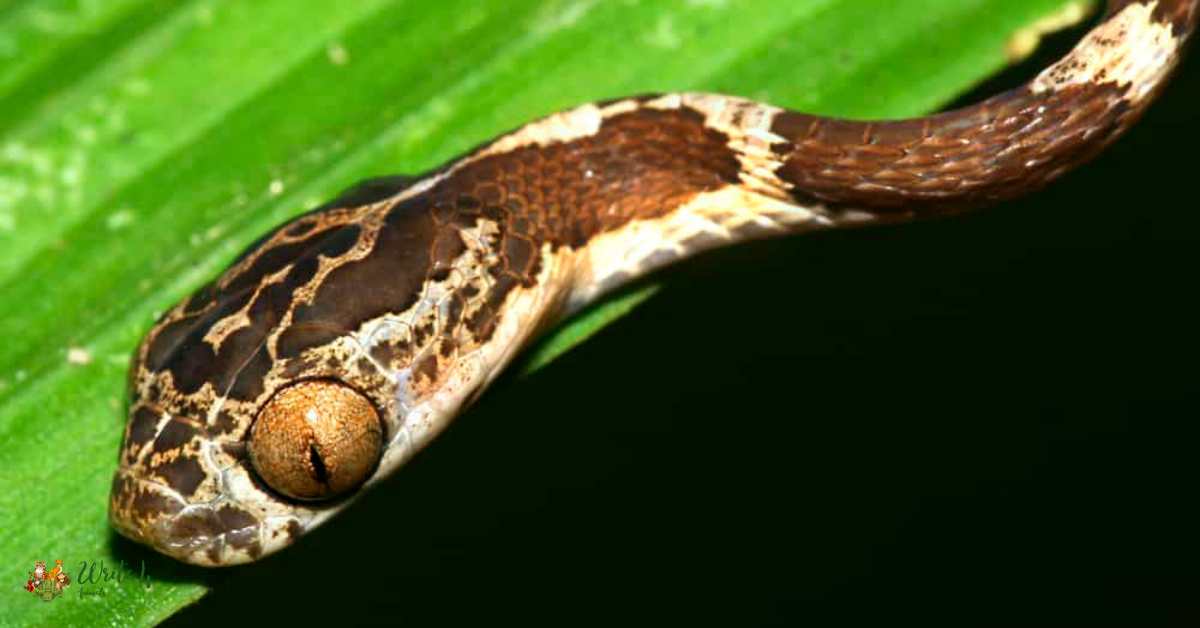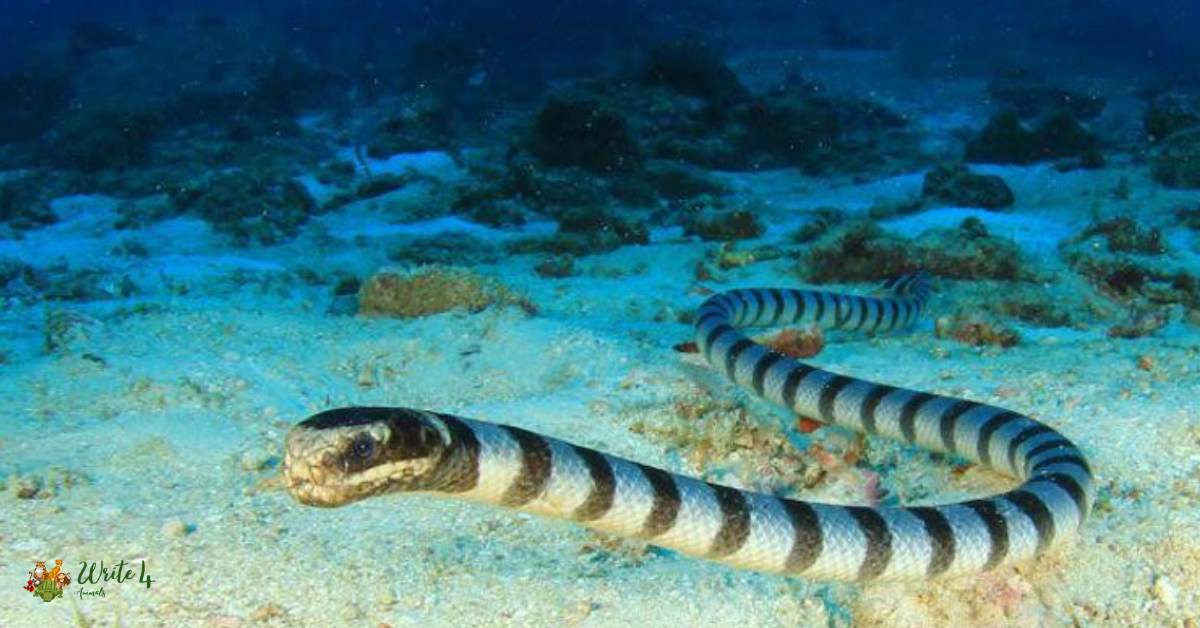The world of reptiles has always captivated the human imagination, with its vast array of species showcasing the incredible diversity of life on our planet. Among these, one enigmatic serpent stands out, commanding attention and curiosity – the 12 snake with big head.
Mysterious and awe-inspiring, this serpent has earned its place in the annals of herpetology as a creature that continues to elude our complete understanding. In this blog post, we embark on a journey to unravel the secrets of the 12 Big Head Snake.
12 Big Head Snake in the world
1. King Cobra
The majestic King Cobra, native to Southeast Asia, earns its regal title with both its imposing size and iconic hood. Renowned as the longest venomous snake, it possesses a head adapted for delivering potent neurotoxins.

This formidable serpent’s large head allows for the accommodation of venom glands, ensuring a lethal bite when threatened. The King Cobra’s hood, formed by the extension of its ribs, serves as a warning display and amplifies the snake’s imposing presence.
As an apex predator, it preys on other snakes and small mammals. The King Cobra’s combination of size, venom, and distinctive features makes it a captivating subject of study and a symbol of the enchanting yet perilous world of snakes.
2. Gaboon Viper
Hailing from the rainforests of Central and West Africa, the Gaboon Viper stands out as a master of camouflage and possesses the longest fangs of any snake. Its remarkably large head accommodates formidable venom glands, delivering a potent cytotoxin to immobilize prey.

The Gaboon Viper’s cryptic coloration, marked by intricate patterns, provides excellent camouflage amidst the forest floor. Despite its heavy-bodied appearance, this viper is an adept ambush predator, relying on its striking speed to capture unsuspecting prey.
The Gaboon Viper’s impressive head size is a testament to its role as a top predator in its ecosystem, showcasing the evolutionary adaptations that contribute to its survival in the dense jungles of Africa.
3. Copperhead Snake
Native to North America, the Copperhead Snake is a pit viper distinguished by its copper-toned head and banded body. While not as large as some of its venomous relatives, the Copperhead compensates with a robust triangular head.

This adaptation allows for the accommodation of venom glands, delivering a hemotoxic bite that aids in subduing prey. Preferring wooded habitats, these snakes are skilled ambush predators, relying on their cryptic coloration to blend seamlessly with the leaf litter.
Despite their venomous nature, Copperhead bites are rarely fatal to humans, and these snakes play a crucial role in controlling rodent populations. The Copperhead Snake’s distinctive head size reflects its place in the intricate web of North American ecosystems, where it serves as both predator and prey.
4. Blunt-Headed Tree Snake
Embracing the treetops of Central and South American rainforests, the Blunt-Headed Tree Snake is a slender species with a notably large, flattened head. This arboreal serpent’s distinctive head adaptation facilitates seamless movement through dense vegetation, allowing it to capture its prey with precision.

While lacking venomous fangs, the Blunt-Headed Tree Snake employs constriction to subdue small vertebrates, particularly lizards and amphibians. Its large head, combined with a slender body, grants it a unique appearance within the snake kingdom.
As a specialized tree-dweller, this snake exemplifies the diverse adaptations that have evolved in response to the challenges of navigating the complex ecosystems of rainforests, where vertical mobility and precise strikes are essential for survival.
5. Cottonmouth Snake
Found in the southeastern United States, the Cottonmouth Snake, also known as the water moccasin, is a semi-aquatic pit viper with a distinct triangular head. Its substantial head accommodates venom glands that deliver potent hemotoxins.

Living in wetland habitats, these snakes are skilled swimmers and often hunt in aquatic environments. The Cottonmouth’s head size aids in swallowing its preferred prey, which includes fish, amphibians, and small mammals.
Despite their intimidating reputation, these snakes play a crucial role in controlling pest populations in their ecosystems. The Cottonmouth Snake’s unique adaptation to aquatic environments, coupled with its impressive head size, underscores the diversity of strategies employed by snakes to thrive in various ecological niches.
6. Eastern Hognose Snake
In the woodlands and grasslands of North America, the Eastern Hognose Snake stands out with its distinctive upturned snout and enlarged head. Despite its non-venomous nature, this snake possesses an intriguing defense mechanism.

When threatened, it may hiss loudly, flatten its neck to appear larger, and even play dead, complete with an open mouth. The Eastern Hognose Snake’s large head and upturned snout are essential for its burrowing habits, allowing it to dig efficiently in search of its preferred diet of toads and amphibians.
This harmless yet charismatic serpent exemplifies the fascinating array of adaptations found in snakes, showcasing that survival strategies extend beyond venomous weaponry in the diverse world of reptiles.
7. Wagler’s Palm Pit Viper
Endemic to the lush rainforests of Southeast Asia, Wagler’s Palm Pit Viper is a strikingly colored snake with a distinctive large head. This arboreal species utilizes its venomous bite to subdue prey, primarily consisting of small mammals and birds found amidst the dense vegetation of tropical canopies.

The large head of Wagler’s Palm Pit Viper accommodates potent venom glands, providing a means to immobilize its prey efficiently. Known for its vibrant hues and intricate patterns, this snake serves as a testament to the beauty and biodiversity found in the ecosystems of Southeast Asia.
Wagler’s Palm Pit Viper’s arboreal lifestyle and impressive head size showcase the intricate relationship between form and function, allowing it to thrive in the vertical realms of rainforest canopies.
8. Arabian Horned Viper
In the arid landscapes of the Middle East and North Africa, the Arabian Horned Viper, with its cryptic coloration and distinctive head scales, is a master of survival. This venomous serpent’s large head accommodates venom glands that deliver a potent cytotoxin, immobilizing its prey in the harsh desert environment.

Named for the horn-like scales above its eyes, the Arabian Horned Viper uses its unique appearance as both camouflage and a warning display. With a preference for nocturnal activity, this snake epitomizes the adaptations necessary for survival in extreme climates.
The Arabian Horned Viper’s large head and horn-like scales are not merely aesthetic; they represent evolutionary solutions that enable it to thrive in the challenging conditions of arid landscapes.
9. Dog-Toothed Cat Snake
Residing in the dense jungles of Southeast Asia, the Dog-Toothed Cat Snake is a non-venomous species recognized for its elongated body and impressive head size.

Despite lacking venom, it is a skilled climber, utilizing its large head to grip onto branches and navigate through the intricate vegetation of its habitat. The Dog-Toothed Cat Snake’s diet consists mainly of small vertebrates, including lizards and birds.
Its large head is essential for capturing and swallowing prey efficiently, showcasing the diverse feeding strategies adopted by snakes. As a predominantly arboreal species, this snake exemplifies the unique adaptations required for survival in the complex and vertically oriented ecosystems of Southeast Asian rainforests.
10. Bighead Sea Snake
Inhabiting the Indian Ocean’s waters, the Bighead Sea Snake is a marine serpent uniquely adapted to life in aquatic environments. As a member of the Hydrophiinae subfamily, this species possesses a large head that aids in its navigation through ocean currents and in capturing its primary prey—fish.

The Bighead Sea Snake’s elongated body and paddle-like tail contribute to its excellent swimming capabilities. While highly venomous, it is not aggressive toward humans and primarily focuses on hunting invertebrates and small fish.
Its large head accommodates venom glands that produce potent neurotoxins, assisting in subduing and digesting its aquatic prey. The Bighead Sea Snake’s adaptation to a fully marine lifestyle exemplifies the remarkable diversity of snakes, showcasing the various ways these creatures have evolved to thrive in their specific habitats, even venturing into the expansive realms of the world’s oceans.
11. Rhinoceros Viper
Inhabiting the lush rainforests of West and Central Africa, the Rhinoceros Viper is a venomous pit viper celebrated for its vibrant coloration and distinctive horn-like scales on its snout. This species’ large head accommodates potent venom glands, delivering a hemotoxic bite to subdue its prey.

The horn-like scales, while not as pronounced as those of some other vipers, contribute to the snake’s cryptic appearance and serve as a unique feature in its genus. The Rhinoceros Viper is primarily arboreal, utilizing its prehensile tail and robust body to navigate the dense vegetation of its habitat.
Its impressive head size and striking coloration highlight the intricate balance between adaptation and survival in the dynamic ecosystems of African rainforests.
12. Boomslang
Native to sub-Saharan Africa, the Boomslang is a visually striking snake known for its large and distinctive head. Its name, meaning “tree snake” in Afrikaans, reflects its arboreal nature.

The Boomslang’s large head accommodates potent venom glands, delivering hemotoxic venom that affects blood clotting. Despite its venomous nature, the Boomslang is generally shy and prefers to escape threats rather than confront them.
With a slender body and vibrant green scales, this snake is well-adapted to life in the trees, showcasing the diverse array of snake species and their specialized adaptations to various environments within the African continent.
Frequently Asked Questions
Why do some snakes have larger heads than others?
The size of a snake’s head is often influenced by its feeding habits and the type of prey it consumes. Snakes that rely on venom to subdue their prey may have larger heads to accommodate venom glands. Additionally, species that consume larger or more challenging prey may also exhibit larger heads for efficient swallowing.
Are snakes with larger heads more venomous?
Not necessarily. While some venomous snakes with larger heads may indeed produce more potent venom, the size of a snake’s head alone is not a definitive indicator of its venom toxicity. Factors such as the specific venom composition, delivery mechanism, and quantity play crucial roles in determining a snake’s venomous capabilities.
What is the function of a snake’s large head?
A snake’s large head serves various functions depending on the species. It may house venom glands for delivering venomous bites, aid in swallowing larger prey, or contribute to specialized behaviors such as burrowing, climbing, or striking. The head size is often a reflection of the snake’s evolutionary adaptations to its ecological niche.
Are all snakes with large heads dangerous to humans?
Not all snakes with large heads pose a threat to humans. While some have potent venom, many large-headed snakes are non-venomous or possess venom that is not harmful to humans. It’s essential to exercise caution and respect when encountering any snake, regardless of its head size, and seek professional assistance if unsure about its venomous nature.
Can snakes with large heads swallow prey whole?
Yes, snakes with larger heads are often adapted for consuming relatively larger prey. Many snake species are capable of swallowing prey whole due to their flexible jaws and stretchable skin. The large head facilitates the ingestion of prey items, allowing the snake to consume meals that might be larger than its body diameter.
How do snakes with large heads adapt to their environments?
Snakes with large heads exhibit various adaptations based on their ecological niches. Arboreal species may use their large heads for gripping branches, while those that burrow may utilize them for efficient digging. The head size often aligns with the snake’s specific behaviors and requirements in its habitat.
What are some precautions when encountering snakes with large heads?
When encountering any snake, it’s crucial to remain calm and avoid provoking or cornering the animal. If unsure about the species or its venomous nature, it’s advisable to keep a safe distance and seek professional assistance. Understanding the snake’s behavior and respecting its natural habitat are essential components of safe wildlife interactions.
Recommended
1. 12 Biggest Cat Breeds in the World
2. 12 fish with big eyes | big eyes fish
3. 21 Types of Lizards in Mexico (With Pictures) 2024 | lizards in mexico